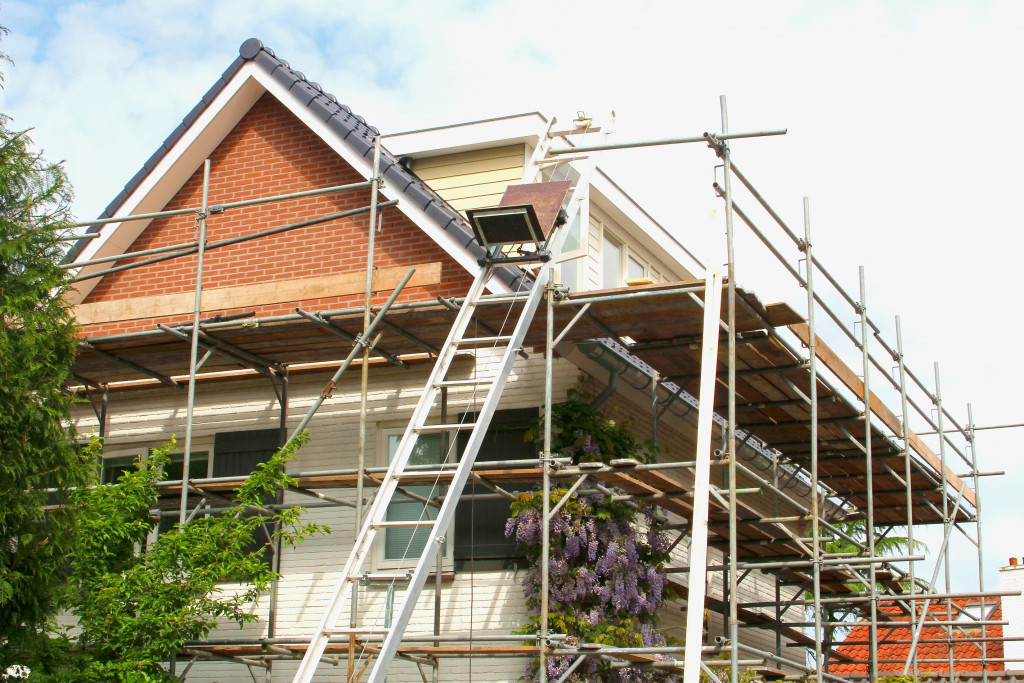- A well-laid-out plan is the cornerstone of any successful renovation project and should be done with expert input.
- Budgeting is crucial for renovation projects; factor in a buffer of 10-15% over your budget for unexpected expenses.
- Consider traffic flow, multi-functional furniture, smart storage solutions, natural light optimization, and accessible design for functionality.
- Embrace sustainability by opting for sustainable materials and energy-efficient appliances to reduce your carbon footprint.
- Oak-framed buildings are a great choice for adding structures due to their durability, timeless aesthetic, and insulating properties.
The idea of renovating your home can be both exhilarating and daunting. On the one hand, it’s an opportunity to design spaces that resonate with your personality, enhancing comfort and functionality. On the other hand, renovations require planning, budgeting, and patience. Whether you’re looking to modernize an outdated area or expand your living spaces, these tips will guide you to transform your home seamlessly and with flair.
1. Begin with a Detailed Plan
A well-laid-out plan is the cornerstone of any successful renovation project. Before diving into any physical changes, take the time to understand your requirements. Are you looking to make more space for a growing family, or is it about upgrading an outdated kitchen or bathroom? Once you’ve identified your primary objectives, it becomes easier to allocate resources and timelines.
Additionally, consult professionals when drafting this plan. Whether it’s an architect, interior designer, or a general contractor, getting expert input ensures that you’re making informed decisions, helping you avoid costly mistakes in the long run.
2. Set a Budget and Stick to It

Budgeting is perhaps one of the most crucial yet challenging aspects of renovation. Determining how much you’re willing to spend will guide your choices regarding materials, labor, and the extent of changes. It’s always advisable to factor in a buffer of 10-15% over your budget for unforeseen expenses.
Moreover, keep track of all expenditures. Unexpected costs can quickly add up; you might find yourself over budget before you realize it. Use budgeting software or even a simple spreadsheet to monitor where every penny goes.
3. Optimize for Functionality
While aesthetics are undoubtedly important, the functionality of a space is equally crucial.
Here are some tips to optimize for functionality:
Consider Traffic Flow
When designing a space, one needs to consider the aesthetics and practical aspects of how people will move through it. It is important to ensure that furniture arrangements are thoughtfully planned to avoid obstructions in pathways and create a natural flow from one area to another. By carefully considering the layout and placement of furniture, you can optimize the functionality and usability of the space, making it more comfortable and inviting for its occupants.
Multi-functional Furniture
Consider incorporating multi-functional furniture into your space to create a more spacious and versatile living environment. By utilizing items such as sofa beds that can easily transform into comfortable sleeping arrangements, extendable dining tables that can accommodate both small and large gatherings, or storage ottomans that provide a convenient place to store extra belongings, you can maximize the functionality of your room.
Smart Storage Solutions
Implementing smart storage solutions can declutter and organize your space. Consider built-in shelves, under-bed storage, or a kitchen island with cabinets for a neat and organized appearance.
Natural Light Optimization
Make the best use of natural light by strategically placing windows and using reflective surfaces. Natural light can create a warm and welcoming ambiance, improve mood, and reduce the reliance on artificial lighting, thereby saving energy.
Accessible Design
Consider accessibility in your design to create an inclusive and comfortable space for all. This may involve incorporating wider doorways and hallways to facilitate wheelchair access, utilizing lever-style door handles that offer greater ease of use compared to traditional knobs, and implementing lower countertops to accommodate individuals with limited reach or height.
4. Embrace Sustainability

As you renovate, consider the long-term environmental impact of your choices. Opting for sustainable materials and energy-efficient appliances reduces your carbon footprint and can lead to considerable savings in utility bills.
Simple choices can make a significant difference. For instance, choosing LED lighting over traditional bulbs, installing water-saving fixtures, or opting for thermal insulation can have lasting impacts. Moreover, these choices often enhance the home’s resale value, making it a worthy investment.
5. Incorporate Oak Framed Buildings
For those looking to add or expand new structures, oak-framed buildings are an excellent choice. Renowned for their durability and timeless aesthetic, oak frames can be used in various applications — from garages and annexes to sunrooms and conservatories. Their natural warmth and texture bring a rustic charm, making them a perfect addition to traditional and modern homes.
Beyond aesthetics, oak-framed buildings are relatively quick to erect, given their pre-designed components. Furthermore, oak is known for its insulating properties, ensuring these structures are energy-efficient, thus adding both beauty and functionality to your renovated space.
In Closing
Renovating your home involves envisioning, planning, and realizing your dream spaces. You can achieve a perfect blend of beauty, comfort, and efficiency with thoughtful decisions, from optimizing for functionality to incorporating elements like oak-framed buildings. Remember, each change you make is a step towards creating a haven that truly feels like home.

